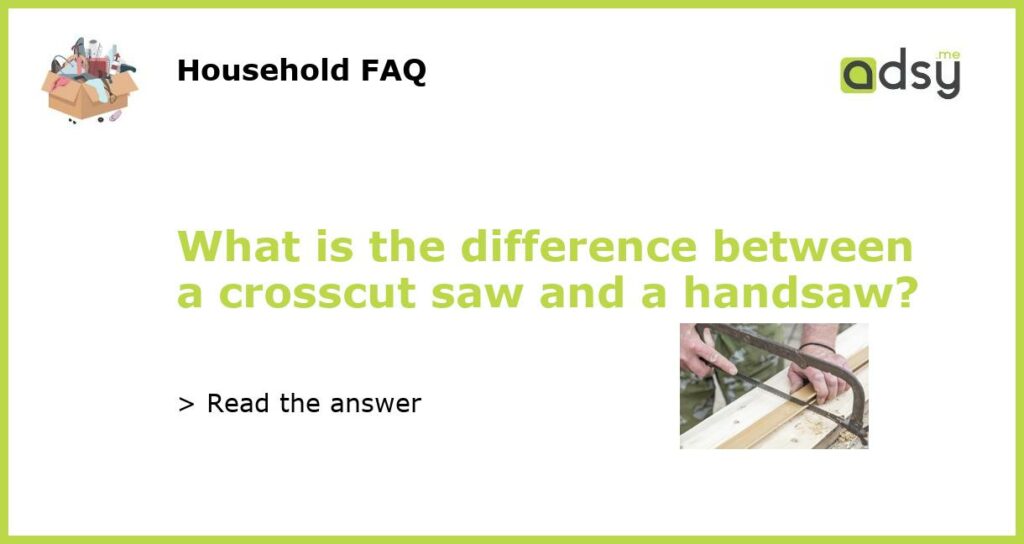Understanding the Basics of Handsaws and Crosscut Saws
When it comes to cutting wood, there are a variety of tools to choose from. Two of the most popular types of saws are handsaws and crosscut saws. Both of these saws have a similar appearance, but they are used in slightly different ways. To help you understand the difference, let’s take a look at the basics of each type of saw.
What is a Handsaw?
A handsaw is a type of saw that is designed to be held in one hand while cutting. These saws are commonly used for smaller jobs, such as cutting through boards or branches. They typically have teeth that are arranged in a straight line and are ideal for cutting with the grain of the wood.
What is a Crosscut Saw?
A crosscut saw is a type of saw that is designed to cut perpendicular to the grain of the wood. These saws typically have teeth that are arranged in a diagonal pattern, which makes it easier to cut through the wood fibers. Crosscut saws are commonly used for cutting larger pieces of wood, such as logs or beams.
The Main Differences Between Handsaws and Crosscut Saws
While both handsaws and crosscut saws are used for cutting wood, there are a few key differences between them. The biggest difference is the way that the teeth are arranged. Handsaws have straight teeth that are designed for cutting with the grain, while crosscut saws have diagonal teeth that are designed for cutting across the grain.
Another difference is the size and shape of the saws. Handsaws are typically smaller and more compact, making them easier to use for smaller jobs. Crosscut saws, on the other hand, are longer and bulkier, which makes them better suited for cutting larger pieces of wood.
Choosing the Right Saw for Your Needs
When choosing between a handsaw and a crosscut saw, it’s important to consider the nature of the job you’ll be doing. If you’re working with smaller pieces of wood, a handsaw may be the better choice. However, if you’re working with larger pieces of wood or logs, a crosscut saw may be necessary.
Ultimately, the key to choosing the right saw is to consider the specifics of the job at hand. By keeping in mind the differences between these two popular saw types, you’ll be able to make an informed decision that will help you achieve the best results.






